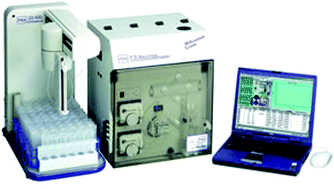P S Analytical began its life as a designer of vapour generation systems for the measurement of the hydride forming elements and mercury by atomic absorption spectrometry. In 1983 a semi-automated system was developed for commercial atomic absorption spectrometry. However, the full potential of the technique was not fully realised until 1987, when the technique was coupled to atomic fluorescence spectrometry and commercialised. Whilst other measurement techniques are now commonly used for the determination of arsenic, antimony, selenium and mercury, atomic fluorescence spectrometry offers significant advantages when reliable, precise measurements are required. This is especially true for mercury determinations. The vapour generation atomic fluorescence spectrometry approach can also be coupled to chromatographic techniques to provide speciation profiles for these elements and ensure correct treatment in order to take preventative action on these environmental samples.
You have access to this article
 Please wait while we load your content...
Something went wrong. Try again?
Please wait while we load your content...
Something went wrong. Try again?


 Please wait while we load your content...
Please wait while we load your content...